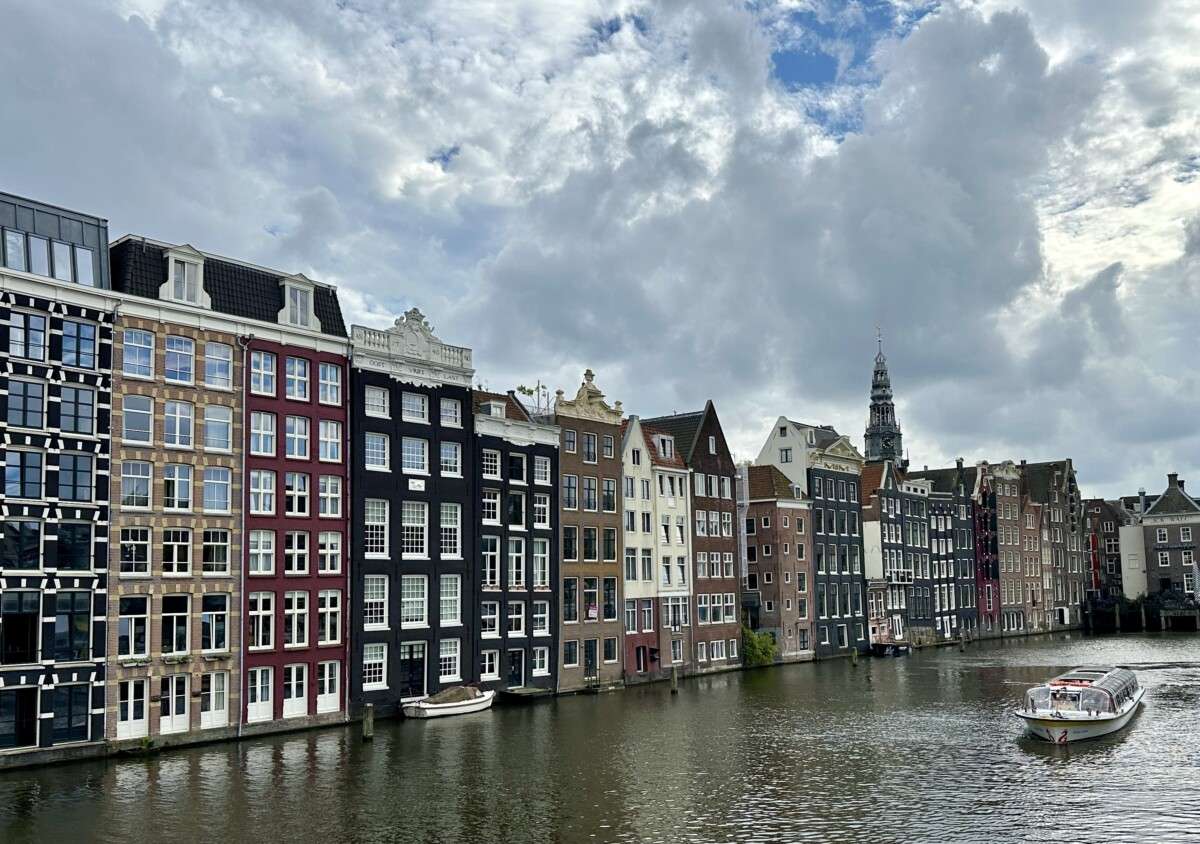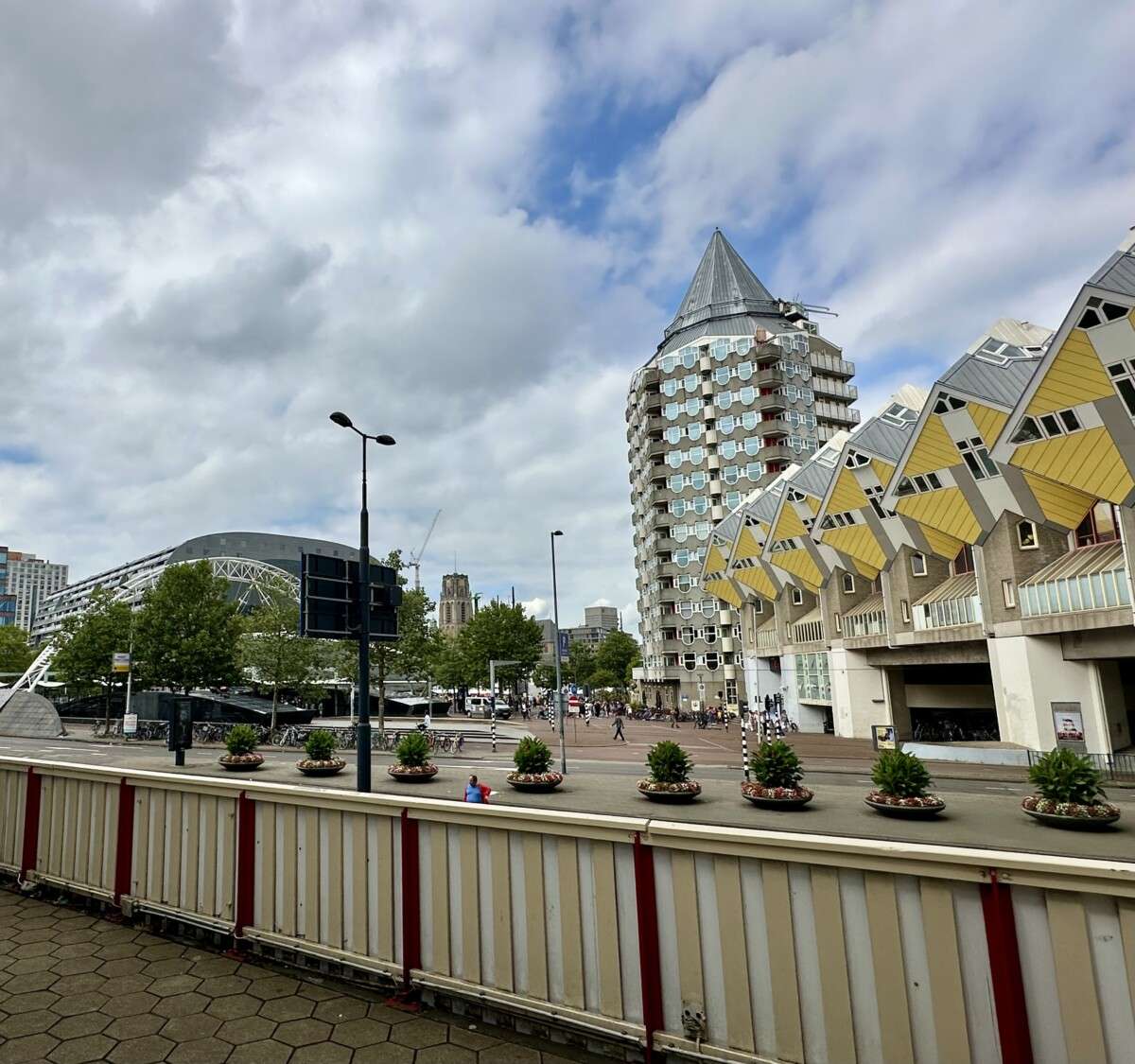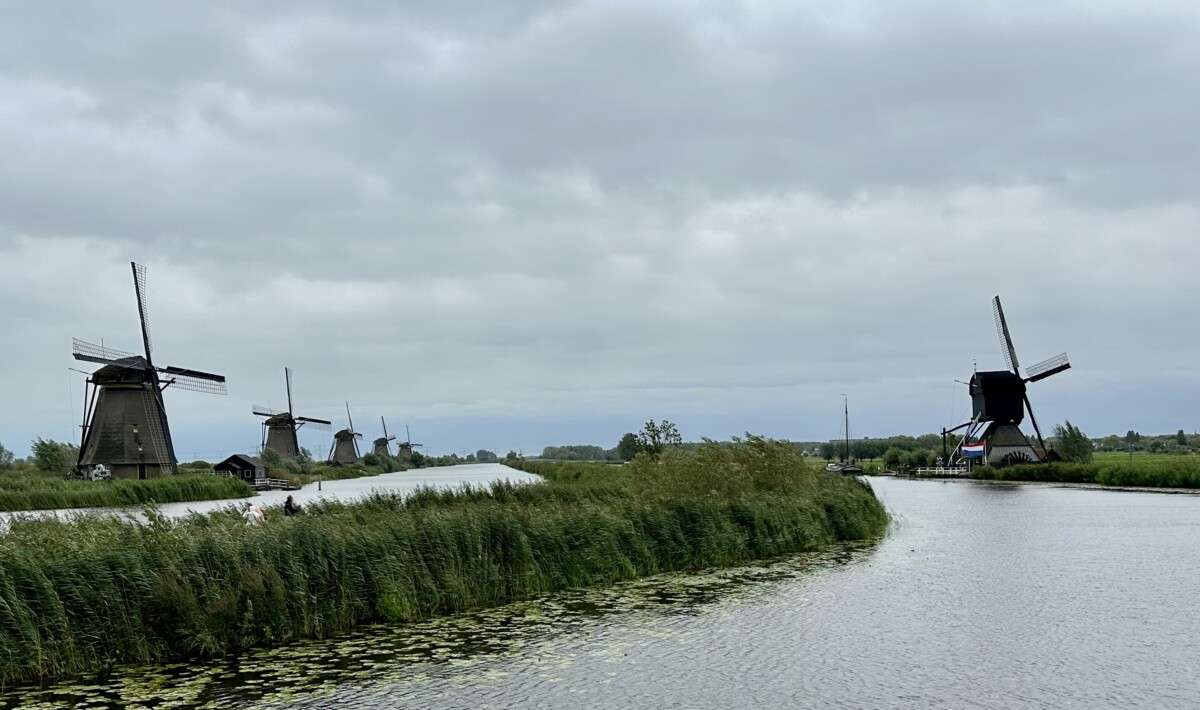“Around the year 630, a bishop decided to establish an abbey at the confluence of the Lys and Scheldt rivers.” – City of Ghent
The year 630 is ancient (in my mind) and it was a struggle to grasp just how long ago that really is! What we did see is that Ghent is a beautiful medieval town about 30 minutes west of Brussels by train. We fell in love with this town and even extended our stay an extra day because there was so much to see and do here.
We began our exploration in the Belfry (and, no, we didn’t see any bats in this belfry). “Ghent’s Belfry (a UNESCO World Heritage Site) symbolises the city’s independence and proudly holds aloft the alarm bell, which served to protect its citizens…The top of the 14th-century base of the Belfry boasts the ‘Dragon of Ghent’, the city’s symbol.” – City of Ghent

We paid the small fee and walked in. Just inside the entrance are several murals. This one (below) depicts the oldest known view of the city. It is dated 1524! The Belfry is the 2nd tower in the middle – listed as “Capitol”. By the way, we saw the city’s name spelled in different ways so I looked it up – Ghent in Belgium, but also Gent, and Gand in French or Gaunt in English. Locals spelled it Ghent, so I have used their spelling.

There are signs throughout the exhibit in many languages. I’ve cropped out the English bits for this post.


After looking at the murals we ducked under a very small doorway to begin our tour of the Belfry tower.

Once inside we saw the four stone watchmen. One of them was the last stone man from 1339. Imagine the stories he could tell.


Above the watchmen you can still see the bell hole that was used to lift and lower the tower bells.


On top of the Belfry the ‘Dragon of Ghent’ has been guarding the city since the thirteenth century.











On another floor we were able to see the Carillion Drum. While we were admiring it the drum began to spin and the bells began to play. It was loud when and scared the heck out of us when it started up.


When we bought our tickets to tour the Belfry, we thought about climbing the stairs. However, we were told that everyone needs to take the elevator to the top due for safety reasons (which we didn’t really understand at the time). We were told we could take the stairs back down.

The elevator stopped when it was almost to the top. We had to take the stairs up one floor to the lookout at the top. It was here we realized why we were told to take the elevator up. These stairs were no joke! Super steep and narrow.





We took our time heading back down. You can see how narrow and uneven the stairs are. There is a handrail on one side and a rope down the middle of the turret. We held on with both hands! These were definitely not up to OSHA standards.

On one floor there is a Bell Museum where the old bells go after they are no longer in tune.



In addition to a Belfry, Ghent has a medieval castle in the middle of the city – Gravensteen, the Castle of the Counts.
“The Castle of the Counts is about the only remaining medieval fortress in Flanders with its defense system still virtually intact. Its history dates back to the Roman occupation when there was already an early settlement on the sandbank of the Lys.” – City of Ghent

Along with our ticket to tour the castle we were given an audio guide. It was unlike any other audio guide we’ve listened to on other tours, mostly because it was narrated by a comedian. We found his take on castle life to be very amusing.

It was interesting to see the different spaces in the castle, and to imagine what it was like to live there back in the 14th century.



I didn’t take any pictures of the stairway in the turrets, however, they were about the same as in the Belfry. But we took the stairs up to the top and the views were just as stunning.

You can see that the town of Ghent has been built right up to the castle’s outer wall.

One interesting thing we saw – this castle had an “indoor” bathroom. It only had one, but it kept the people who used it out of the elements while using the facilities.



The medieval times were tough, people were often tortured within these castle walls. There were pictures drawn by illustrator Randall Casaer depicting events that took place in different rooms within the castle.


One of the ways to see the great architecture in the city is to take a canal tour. There are quite a few tour operators along the river and we just picked one at random.

Here are some of the buildings we saw from our tour.






We were able to get a great view of Gravensteen, the Castle of the Counts, from the river.



“In order to check the quality of the meat that was sold, every medieval city had a butchers’ hall where the sale of meat was centralised. Ghent’s version is a splendid, covered market hall with a guildhall that dates back to the 15th century. From the end of the 19th century onwards, meat could also be sold privately and from door to door, so the Butchers’ Hall fell into disuse.” – City of Ghent

Ghent’s Town Hall is a huge building with two entirely different facades. One side was built first (early 16th century) and is very Gothic with all the scroll work around the windows and columns. The other side was finished later and is done in the Renaissance style inspired by Italian buildings. We didn’t go in but were told that it is one seemless building inside.

“This illustrious square has always played a prominent role in Ghent’s history. Events both good and bad have played out here since 1199.” “An entrepreneur and politician (1290-1345), Jacob Van Artevelde was mainly known as the leader of Ghent’s insurgents. He managed to undo the boycott of English wool imports and became a true hero of the city.” – City of Ghent

“While Brussels has Manneken Pis, Ghent boasts Manneke Nestor: a little boy flanked by two girls, Lena and Luna, on a facade in Kraanlei.” – City of Ghent

Graffiti Street – “Concieved as a temporary project during the 1995 Ghent festivities, this alley has now served for years as a dynamic sketchbook, a demonstration of current street art and above all as a free port for Ghent’s many graffiti artists.” – City of Ghent

We were told not to lean on any walls because they are usually still wet since artists paint on these walls daily. In fact, we watched a couple of people painting while we walked through. We read that sometimes the city paints out the entire alley to serve as a blank canvas for new art.

All around Europe we saw water fountains on the street. Ghent was the only place where we saw fountains designed to be used by more than just people. The top is a bird bath, then there is a spout for people to fill canteens or water bottles, a little lower is a trough for horses to get a drink, and finally, at the bottom is a place for small animals to get a drink.

St. Nicholas’ Church – “This gem from the early 12th century looks out over Korenmarkt and has St Nicholas, the protector of merchants and sailors, as its patron saint. After all, they were the people who raised the money to build this impressive example of the Scheldt Gothic style. The splendour of the building highlights the wealth and power of the merchants.” – City of Ghent


St. Bavo’s Cathedral, “the oldest parish church in Ghent, was built on the site of a previous church dating back to the 10th century and a Romanesque church from the 12th century, dedicated to St. John the Baptist. The cathedral has a rich history and houses many art treasures…” – City of Ghent

We loved this city and highly recommend a stop here if you come to Belgium.






A wonderful tour of Ghent. You really outdid yourselves with this Post. Thanks.
Hello Jeri and Joel,
Thank you for an interesting tour of Ghent in Belgium.
Yes, it is a MUST to tour a Medieval City in Europe…definitely something to marvel about the creativity and smarts of the people to build something awesome with very limited tools!!
Stark difference with today’s convenience with all kinds of tools and equipments, etc… but no match to the longevity of those buildings/structures, cathedrals, canals, etc!
Thank you for that great tour
What an interesting town! I loved the bird bath.